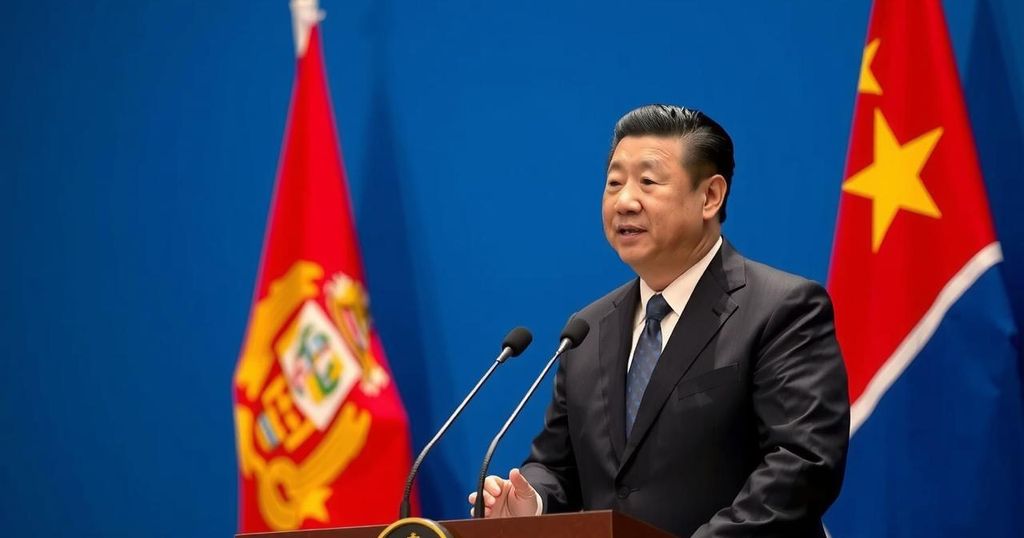The APEC summit in Lima concluded with leaders discussing economic cooperation amid concerns of shifting U.S. trade policy under incoming President Trump. President Xi promoted globalization while Biden’s late arrival symbolized uncertainty in U.S. leadership. Tensions between the U.S. and China remain a focal point as both leaders engaged in crucial discussions during the meeting.
The Asia-Pacific Economic Cooperation (APEC) forum concluded in Lima, Peru, after two days of discussions that largely reflected generalities regarding economic cooperation. The gathering, which included prominent leaders such as U.S. President Joe Biden, Chinese President Xi Jinping, and Japanese Prime Minister Shigeru Ishiba, took place amid concerns about the future of global free trade under the incoming U.S. administration led by Donald Trump. The conclusion of the summit raised questions about whether the spirit of cooperation observed this year will persist in the face of increasing tensions between the U.S. and China. During the traditional APEC family photo session, President Biden’s late arrival metaphorically illustrated the shifting geopolitical landscape. Meanwhile, President Xi capitalized on the summit to promote globalization, inaugurating a significant $1.3 billion megaport in Peru and actively opposing protectionist policies. The leaders were adorned in traditional bark-hued scarves representative of Peru, symbolizing unity among member economies. In light of the intense trade and security rivalry between the United States and China, Biden and Xi engaged in their third and final meeting of Biden’s presidency. This summit marked a pivotal moment for the Asia-Pacific region as uncertainties loom regarding the future of U.S. leadership in global trade initiatives, especially considering Trump’s avowed intent to retract from international trade agreements.
The Asia-Pacific Economic Cooperation (APEC) forum is a significant platform aimed at promoting economic growth, cooperation, trade, and investment in the Asia-Pacific region. Founded in 1989, APEC brings together 21 member economies that account for a substantial portion of global trade. The forum serves as an important avenue for leaders to address shared challenges, strategize mutually beneficial trade agreements, and foster dialogue on security and economic stability. This year’s summit was particularly noteworthy due to the contrasting positions of the United States and China on international trade policies, exacerbated by the imminent transition in U.S. leadership.
In summary, the APEC summit in Peru highlighted the complexities of international relations and trade amid shifting leadership dynamics. As President Xi positioned himself as a proponent of globalization, President Biden’s participation underscored the uncertainty of U.S. commitment to free trade under the new administration. The interplay between these two powerful nations will likely shape the future landscape of economic cooperation in the Asia-Pacific region as challenges persist in maintaining collaboration amid competitive tensions.
Original Source: www.usnews.com






